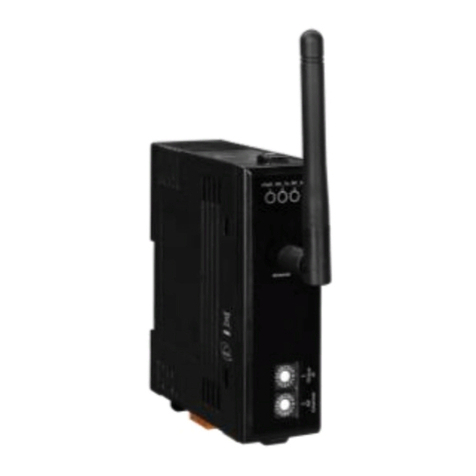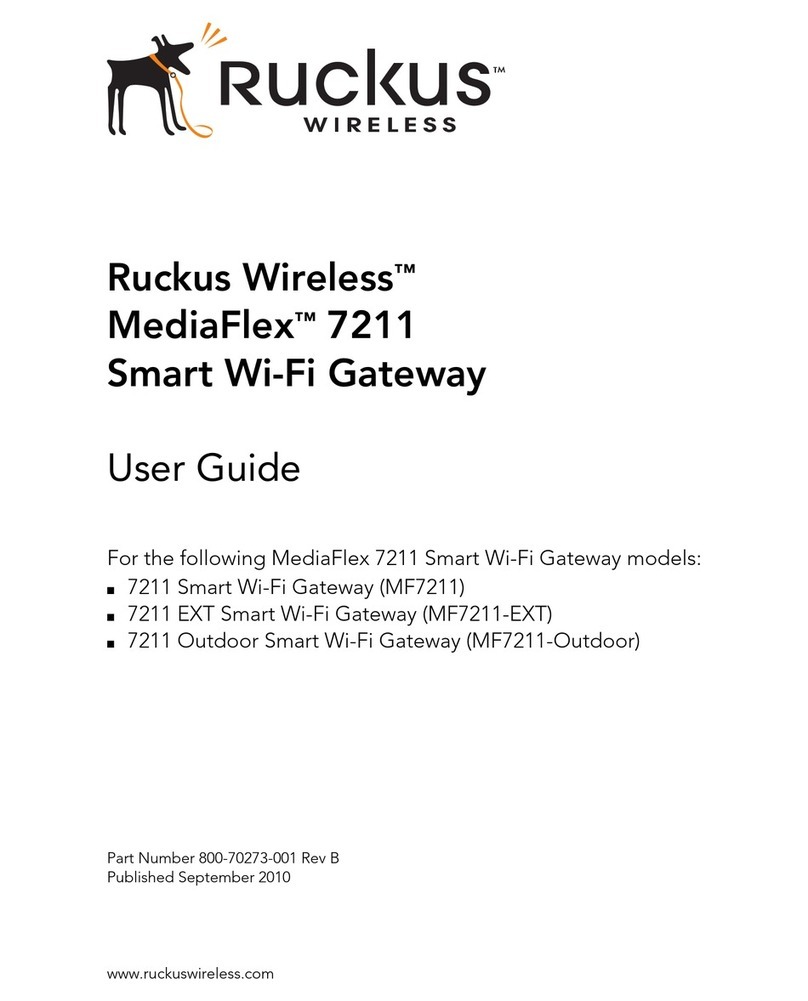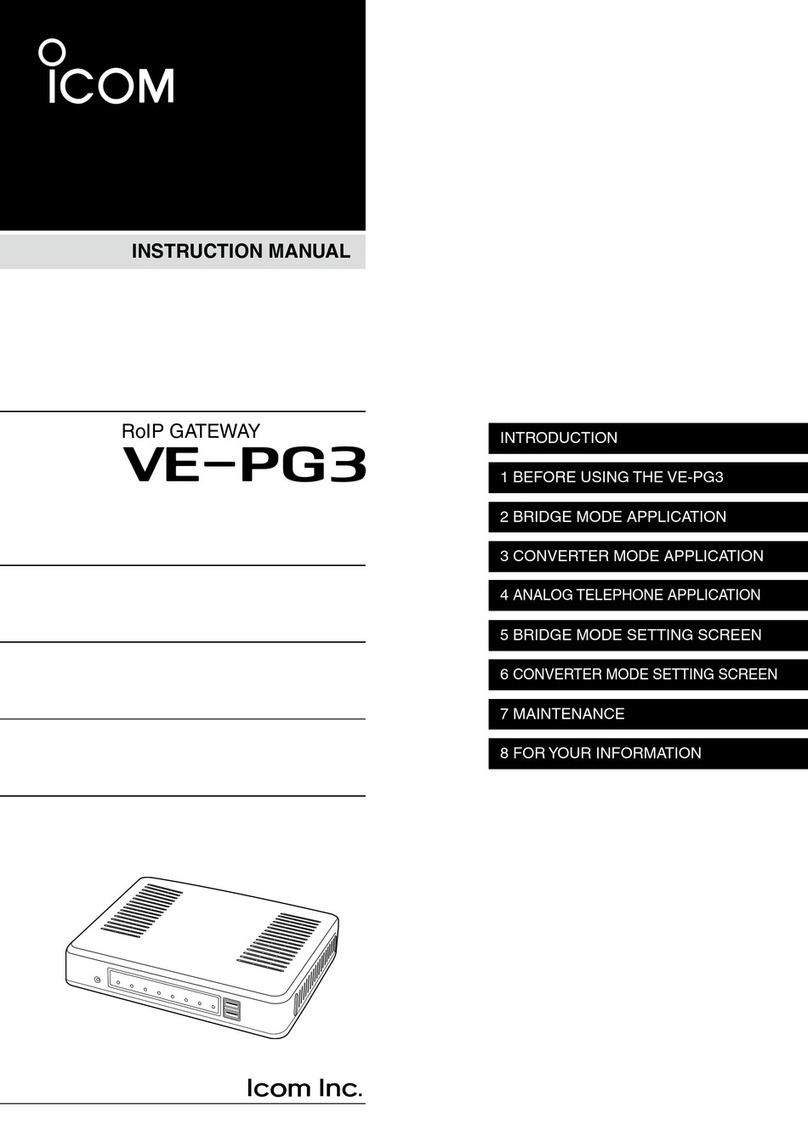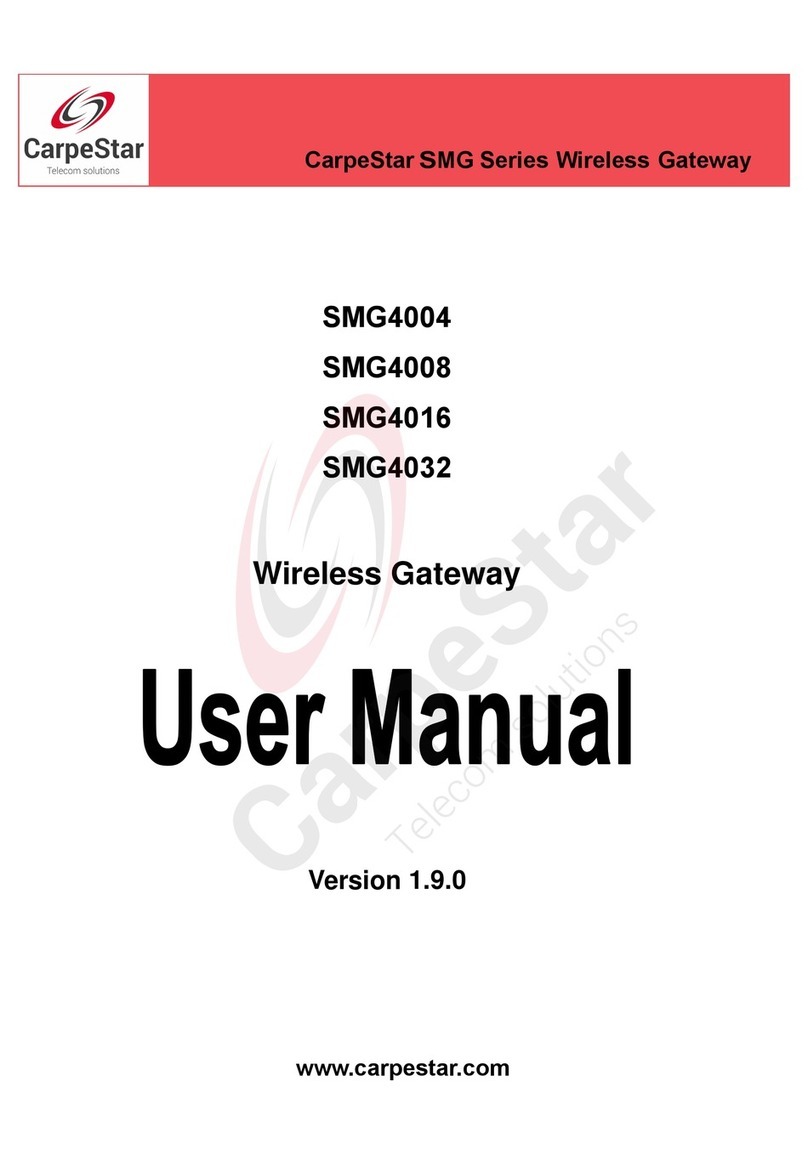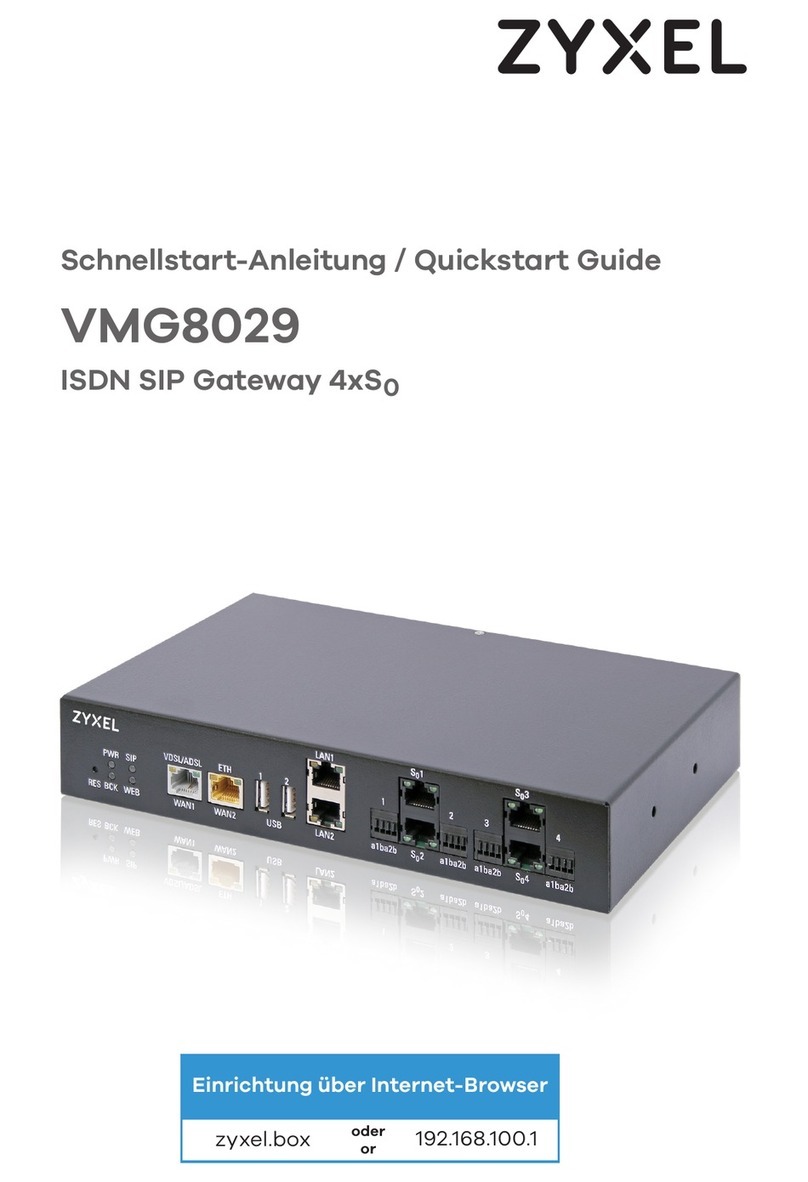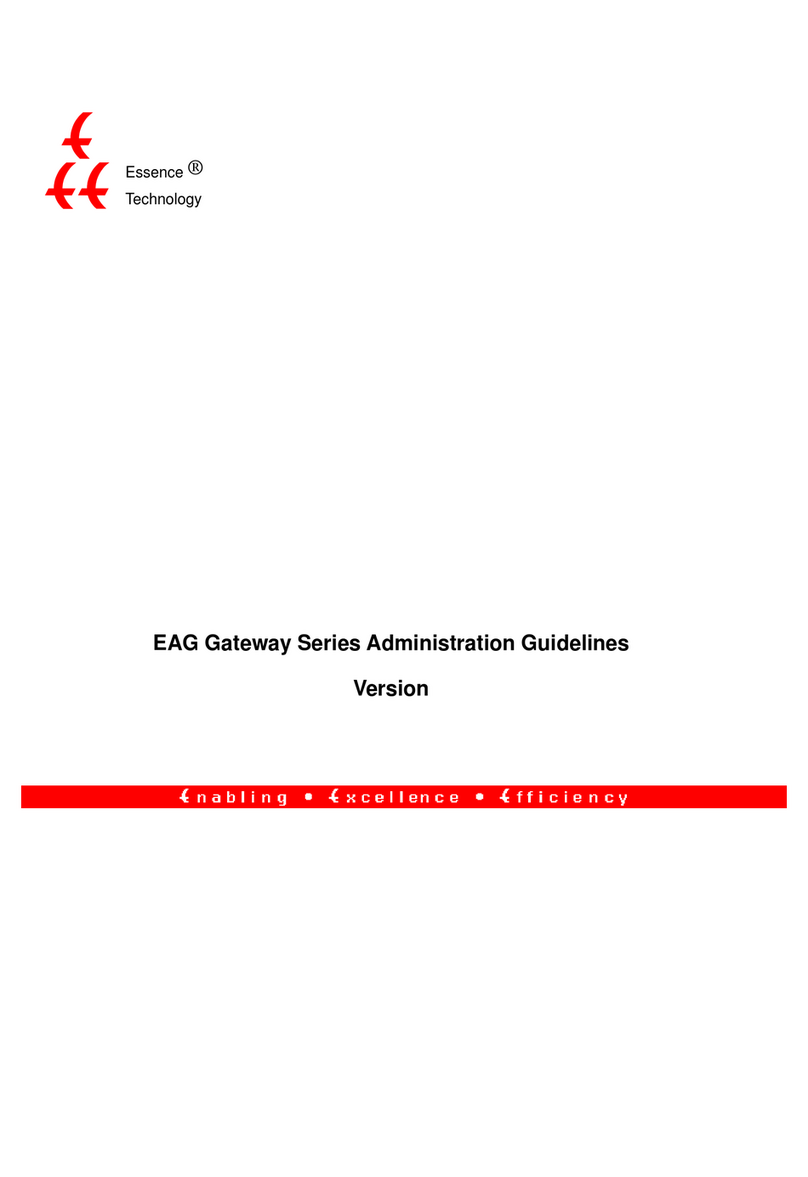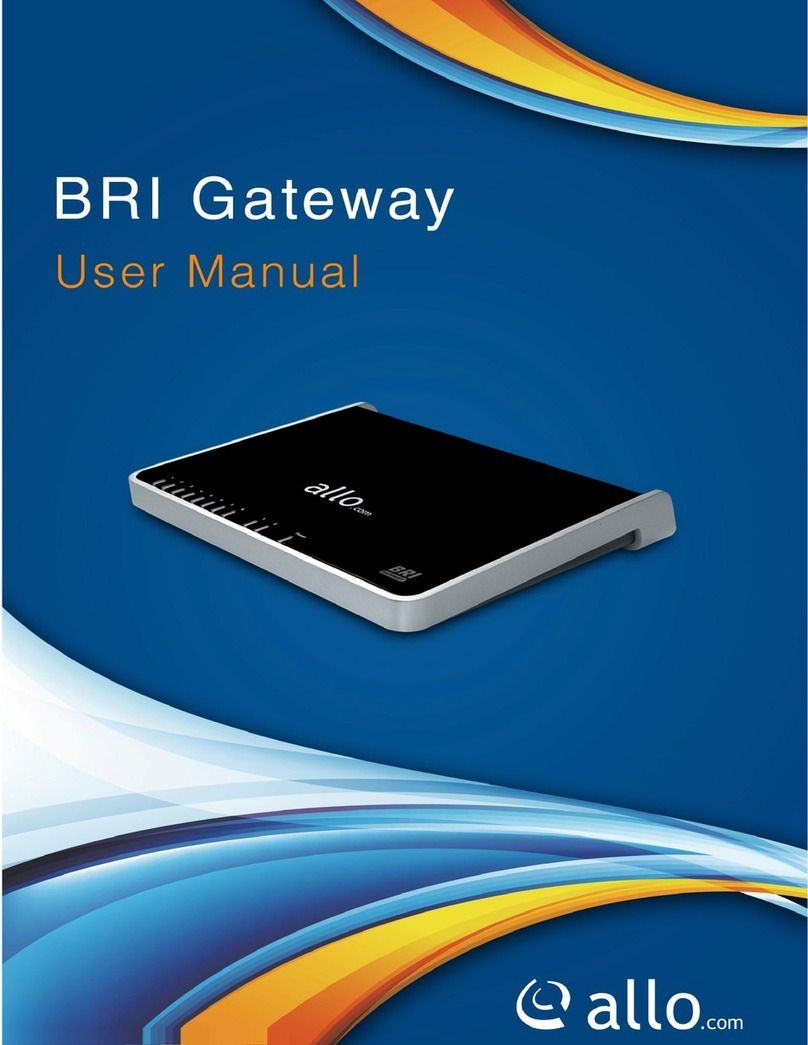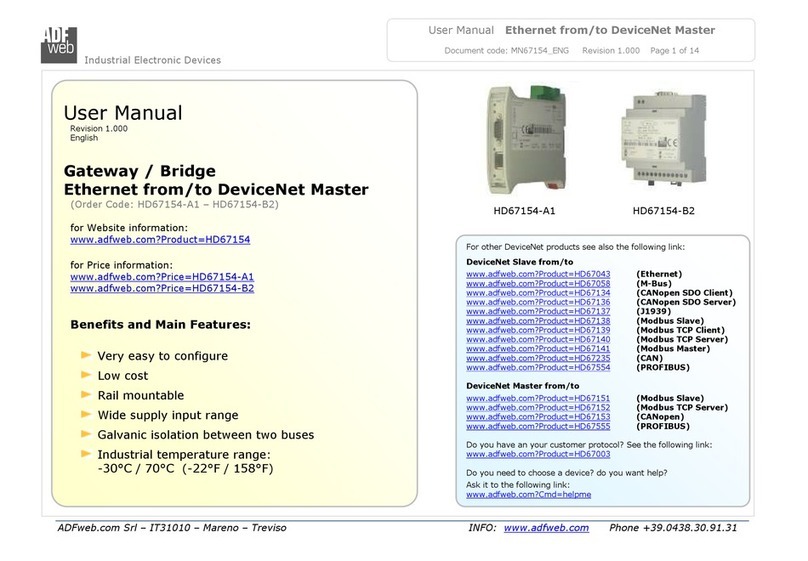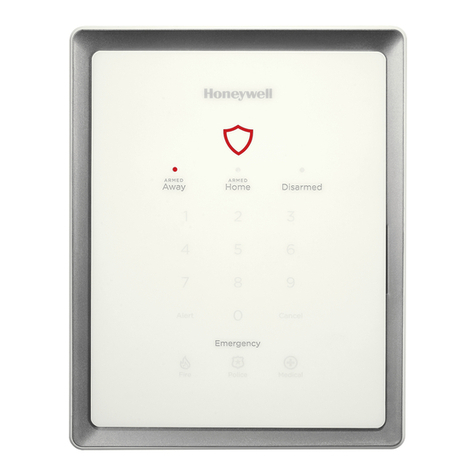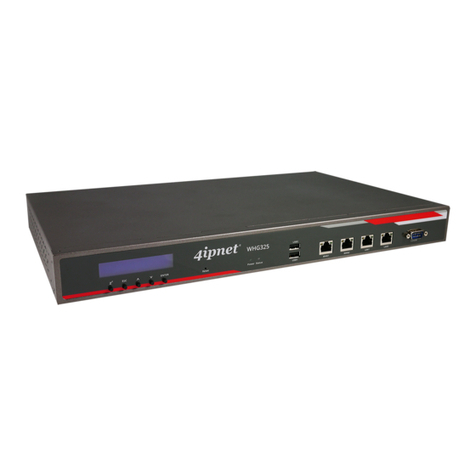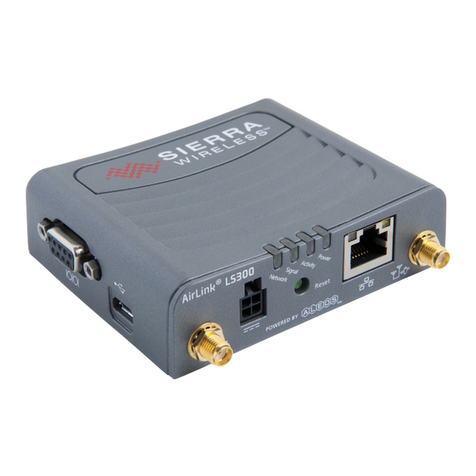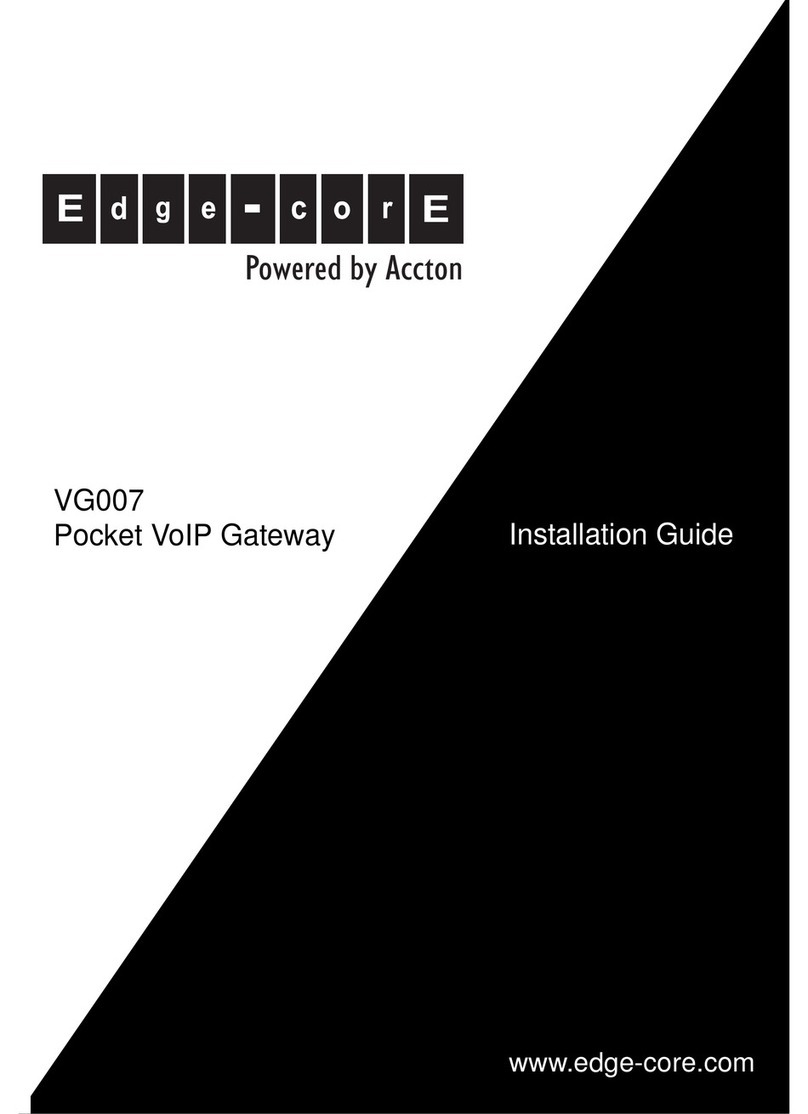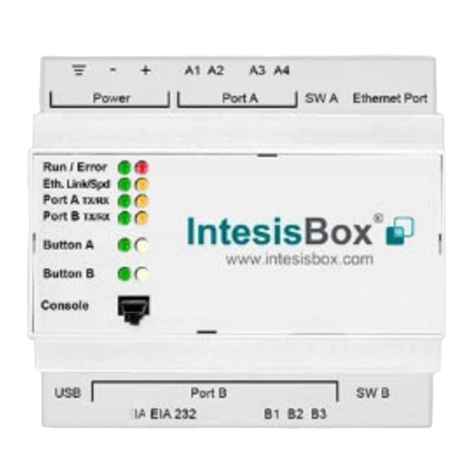Thales Cinterion DGL61-W User manual

Cinterion®Device Gateway LTE
Hardware Interface Description
Version: 07
DocId: DGL61-W_HID_v07

GENERAL NOTE
THIS DOCUMENT CONTAINS INFORMATION ON THALES DIS AIS DEUTSCHLAND GMBH
(“THALES”) PRODUCTS. THALES RESERVES THE RIGHT TO MAKE CHANGES TO THE PROD-
UCTS DESCRIBED HEREIN. THE SPECIFICATIONS IN THIS DOCUMENT ARE SUBJECT TO
CHANGE AT THE DISCRETION OF THALES. THE PRODUCT AND THIS DOCUMENT ARE PRO-
VIDED ON AN "AS IS" BASIS ONLY AND MAY CONTAIN DEFICIENCIES OR INADEQUACIES.
THALES DOES NOT ASSUME ANY LIABILITY FOR INFORMATION PROVIDED IN THE DOCUMENT
OR ARISING OUT OF THE APPLICATION OR USE OF ANY PRODUCT DESCRIBED HEREIN.
THALES GRANTS A NON-EXCLUSIVE RIGHT TO USE THE DOCUMENT. THE RECIPIENT SHALL
NOT COPY, MODIFY, DISCLOSE OR REPRODUCE THE DOCUMENT EXCEPT AS SPECIFICALLY
AUTHORIZED BY THALES.
Copyright © 2021, THALES DIS AIS Deutschland GmbH
Trademark Notice
Thales, the Thales logo, are trademarks and service marks of Thales and are registered in certain coun-
tries. Microsoft and Windows are either registered trademarks or trademarks of Microsoft Corporation in
the United States and/or other countries. All other registered trademarks or trademarks mentioned in this
document are property of their respective owners.
tDGL61-W_HID_v07 2021-02-17
Public / Preliminary
Cinterion®DGL61-W Hardware Interface Description
2
Page 2 of 42
Document Name: Cinterion®DGL61-W Hardware Interface Description
Version: 07
Date: 2021-02-17
DocId: DGL61-W_HID_v07
Status Public / Preliminary

Cinterion®DGL61-W Hardware Interface Description
Contents
42
tDGL61-W_HID_v07 2021-02-17
Public / Preliminary
Page 3 of 42
Contents
0 Document History ...................................................................................................... 7
1 Introduction ................................................................................................................. 9
1.1 Related Documents ........................................................................................... 9
1.2 Terms and Abbreviations ................................................................................. 10
1.3 Regulatory and Type Approval Information ..................................................... 12
1.3.1 Directives and Standards.................................................................... 12
1.3.2 Safety Precautions.............................................................................. 15
1.3.3 Disposal .............................................................................................. 16
1.4 Product Label................................................................................................... 17
2 Product Concept ....................................................................................................... 18
2.1 Key Features at a Glance ................................................................................ 18
3 Getting Started with DGL61-W................................................................................. 21
3.1 Technical Requirements for Using DGL61-W.................................................. 21
3.2 Start Up the DGL61-W..................................................................................... 21
4 Interface Description ................................................................................................ 23
4.1 Overview .......................................................................................................... 23
4.2 Block Diagram.................................................................................................. 24
4.3 Operating Modes ............................................................................................. 25
4.4 USB Interface................................................................................................... 25
4.5 Power Supply................................................................................................... 26
4.6 Power Up/Power Down Scenarios................................................................... 26
4.6.1 Turn Device Gateway LTE on............................................................. 26
4.6.2 Reset/Restart Device Gateway LTE ................................................... 26
4.6.3 Turn Device Gateway LTE off............................................................. 26
4.6.4 Disconnecting power supply ............................................................... 27
4.7 Automatic thermal shutdown............................................................................ 27
4.8 RTC.................................................................................................................. 27
4.9 SIM Interface.................................................................................................... 28
4.10 Status LEDs ..................................................................................................... 29
5 Electrical and Environmental Characteristics........................................................ 30
5.1 Absolute Maximum Ratings ............................................................................. 30
5.2 Operating Power Supply .................................................................................. 30
5.3 RF Output Power ............................................................................................. 30
5.4 USB Interface................................................................................................... 31
5.5 Operating Temperatures.................................................................................. 32
5.6 Storage Conditions .......................................................................................... 33

Cinterion®DGL61-W Hardware Interface Description
Contents
42
tDGL61-W_HID_v07 2021-02-17
Public / Preliminary
Page 4 of 42
6 Mechanics, Mounting and Packaging ..................................................................... 34
6.1 Mechanical Dimensions ................................................................................... 34
6.2 Mounting Clip (optional) ................................................................................... 35
6.3 Packaging ........................................................................................................ 36
7 Full Type Approval.................................................................................................... 37
7.1 Thales Reference Setup .................................................................................. 37
7.2 Restrictions ...................................................................................................... 38
7.3 CE Conformity.................................................................................................. 38
7.4 EMC ................................................................................................................. 38
7.5 RF Exposure Information ................................................................................. 38
7.6 Compliance with FCC and ISED Rules and Regulations................................. 39
8 Ordering Information ................................................................................................ 41

Cinterion®DGL61-W Hardware Interface Description
Tabl es
tDGL61-W_HID_v07 2021-02-17
Public / Preliminary
Page 5 of 42
Tables
Table 1: Terms and abbreviations................................................................................. 10
Table 2: Directives ........................................................................................................ 12
Table 3: Standards of North American type approval ................................................... 12
Table 4: Standards of European type approval............................................................. 13
Table 5: Requirements of quality .................................................................................. 13
Table 6: Standards of the Ministry of Information Industry of the
People’s Republic of China............................................................................. 14
Table 7: Toxic or hazardous substances or elements with defined concentration
limits................................................................................................................ 14
Table 8: Device Gateway LTE label information ........................................................... 17
Table 9: Device Gateway LTE‘ interfaces..................................................................... 23
Table 10: Overview of operating modes ......................................................................... 25
Table 11: Absolute maximum ratings.............................................................................. 30
Table 12: Operating supply voltage for Device Gateway LTE ........................................ 30
Table 13: Maximal supply current for Device Gateway LTE ........................................... 30
Table 14: RF Output Power ............................................................................................ 30
Table 15: Temperature characteristics............................................................................ 32
Table 16: Storage conditions .......................................................................................... 33
Table 17: Highest reported SAR ..................................................................................... 38
Table 18: Ordering Information ....................................................................................... 41

Cinterion®DGL61-W Hardware Interface Description
Figures
tDGL61-W_HID_v07 2021-02-17
Public / Preliminary
Page 6 of 42
Figures
Figure 1: Sample Device Gateway LTE label DGL61-W................................................ 17
Figure 2: Installed USB devices ..................................................................................... 22
Figure 3: Connection via USB interface (USB modem) ................................................. 22
Figure 4: Device Gateway LTE 3D view......................................................................... 23
Figure 5: Block diagram ................................................................................................. 24
Figure 6: SIM interface................................................................................................... 28
Figure 7: Status LEDs .................................................................................................... 29
Figure 8: Device Gateway LTE 3D overview.................................................................. 34
Figure 9: Device Gateway LTE mechanical dimensions................................................ 35
Figure 10: DGL61-W Mounting Clip ................................................................................. 35
Figure 11: Reference equipment for approval.................................................................. 37

Cinterion®DGL61-W Hardware Interface Description
0 Document History
8
tDGL61-W_HID_v07 2021-02-17
Public / Preliminary
Page 7 of 42
0 Document History
Preceding Document: Cinterion
®
Device Gateway LTE Hardware Interface Description" Version 06
New document:
"
Cinterion®Device Gateway LTE Hardware Interface Description" Version 07
Preceding Document: Cinterion
®
Device Gateway LTE Hardware Interface Description" Version 05
New document:
"
Cinterion®Device Gateway LTE Hardware Interface Description" Version 06
Preceding Document: Cinterion
®
Device Gateway LTE Hardware Interface Description" Version 04
New document:
"
Cinterion®Device Gateway LTE Hardware Interface Description" Version 05
Preceding Document: Cinterion
®
Device Gateway LTE Hardware Interface Description" Version 03
New document:
"
Cinterion®Device Gateway LTE Hardware Interface Description" Version 04
Preceding Document: Cinterion
®
Device Gateway LTE Hardware Interface Description" Version 02
New document: "Cinterion®Device Gateway LTE Hardware Interface Description" Version 03
Chapter What is new
1.3.1 Added standards/regulations regarding RF exposure to Table 3 and Table 4
1.4 Revised Figure 1 Product Label
4.10 Added description to control the LEDs
5.3 Revised Table 14 RF output power for some bands
5.5 Revised Table 15 regarding operating temperature
7.5 New chapter “RF Exposure Information”
Chapter What is new
1.3.1 Revised standards and versions in Table 3 and Table 4
3.2 Revised chapter (product and company name)
7.6 Revised FCC ID
Chapter What is new
1.3.1 Revised IP classification in Table 5
2.1, 5.2 Revised maximum supply current (Table 13)
2.1, 5.5 Revised ambient temperature (Table 15)
Chapter What is new
1.3.3 Added chapter about Disposal
1.4 Revised Label (Figure 1) and Label description (Table 8)
Chapter What is new
2.1 Revised Table Feature of the Glance
4.3 Removed former Chapter “Terminal Circuit”
2.1, 6.1 Revised size of DGL61-W

Cinterion®DGL61-W Hardware Interface Description
0 Document History
8
tDGL61-W_HID_v07 2021-02-17
Public / Preliminary
Page 8 of 42
Preceding Document: Cinterion
®
Device Gateway LTE Hardware Interface Description" Version 01
New document: "Cinterion®Device Gateway LTE Hardware Interface Description" Version 02
New document: "Cinterion®Device Gateway LTE Hardware Interface Description" Version 01
4.6.1 to 4.7 Revised chapter to behavior of DGL61-W
4.10 Revised chapter regarding color of the LEDs
5.1, 5.2 Revised in power supply voltage Table 11 and Table 12
5.3 New Chapter regarding RF output power
5.5 Revised values in Table 15
6.2 New Chapter for Mounting Clip
8Added Mounting Clip to Table 18
Chapter What is new
4.10 Changed sequence of LEDs in Figure 7
Chapter What is new
-- Initial document setup.

Cinterion®DGL61-W Hardware Interface Description
1 Introduction
17
tDGL61-W_HID_v07 2021-02-17
Public / Preliminary
Page 9 of 42
1 Introduction
This document1describes the hardware of the Cinterion®Device Gateway LTE:
•DGL61-W implements a USB 2.0 interface with a USB-A connector
The Device Gateway LTE contains a Cinterion®PLS62-W module with internal antennas and
has a fixed connected USB 2.0 cable with a USB-A connector.
The scope of this document includes interface specifications, electrical as well as mechanical
characteristics of the Device Gateway LTE. It specifies standards pertaining to wireless appli-
cations and outlines requirements that must be adhered to for successful product design. The
Device Gateway LTE is a compact LTE/UMTS/GSM modem for the transfer of data in LTE/
UMTS/GSM networks. Industrial standard interfaces and an integrated SIM card reader allow
using the Device Gateway LTE easily as UMTS/GPRS/GSM terminal.
1.1 Related Documents
[1] PLS62-W AT Command Set
[2] Getting Started with DGL61-W
[3] Java User‘s Guide
1. The document is effective only if listed in the appropriate Release Notes as part of the technical docu-
mentation delivered with your Thales product.

Cinterion®DGL61-W Hardware Interface Description
1.2 Terms and Abbreviations
17
tDGL61-W_HID_v07 2021-02-17
Public / Preliminary
Page 10 of 42
1.2 Terms and Abbreviations
Table 1: Terms and abbreviations
Abbreviation Description
ARP Antenna Reference Point
ATC AT Command
BTS Base Transceiver Station
CB Cell Broadcast
CODEC Coder-Decoder
DAI Digital Audio Interface
DCE Data Circuit terminating Equipment
DSR Data Set Ready
DTR Data Terminal Ready
EFR Enhanced Full Rate
EGSM Enhanced GSM
EMC Electromagnetic Compatibility
ESD Electrostatic Discharge
ETS European Telecommunication Standard
FDMA Frequency Division Multiple Access
G.C.F. GSM Conformity Forum
GSM Global Standard for Mobile Communication
HW Hardware
I2C Inter Integrated Circuit
IC Integrated Circuit
IF Intermediate Frequency
IMEI International Mobile Equipment Identifier
I/O Input/ Output
IGT Ignition
ISO International Standards Organization
ITU International Telecommunications Union
kbps kbits per second
LVD Low voltage Directive
Mbps Mbits per second
MMI Machine Machine Interface
MO Mobile Originated
MS Mobile Station
MT Mobile Terminated

Cinterion®DGL61-W Hardware Interface Description
1.2 Terms and Abbreviations
17
tDGL61-W_HID_v07 2021-02-17
Public / Preliminary
Page 11 of 42
NC Not Connected
NTC Negative Temperature Coefficient
PA Power Amplifier
PCB Printed Circuit Board
PCM Pulse Code Modulation
PCS Personal Communication System
PD Power Down
PDU Protocol Data Unit
PoE Power over Ethernet
RED Radio Equipment Directive
RF Radio frequency
RI Ring Indication
RX Receive direction
SIM Subscriber Identification Module
SMS Short Message Service
SW Software
TDD Time Division Duplex
TDMA Time Division Multiple Access
TX Transmit direction
UART Universal Asynchronous Receiver and Transmitter
Table 1: Terms and abbreviations
Abbreviation Description

Cinterion®DGL61-W Hardware Interface Description
1.3 Regulatory and Type Approval Information
17
tDGL61-W_HID_v07 2021-02-17
Public / Preliminary
Page 12 of 42
1.3 Regulatory and Type Approval Information
1.3.1 Directives and Standards
Device Gateway LTE have been designed to comply with the directives and standards listed
below.
Table 2: Directives
2014/53/EU Directive of the European Parliament and of the council of 16 April 2014
on the harmonization of the laws of the Member States relating to the mak-
ing available on the market of radio equipment and repealing Directive
1999/ 05/EC.
The product is labeled with the CE conformity mark - see Section 7.3.
2002/95/EC (RoHS 1)
2011/65/EU (RoHS 2)
2015/863/EU (RoHS 3)
Directive of the European Parliament and of the Council of
27 January 2003 on the restriction of the use of certain
hazardous substances in electrical and electronic equip-
ment (RoHS). Revised on 8 June 2011. Further revision
on 31March 2015 - amending Annex II to Directive 2011/
65/EU of the European Parliament and of the Council as
regards the list of restricted substances.
2002/96/EC Directive of the European Parliament and of the Council on waste electri-
cal and electronic equipment (WEEE)
2003/108/EC Directive of the European Parliament and of the Council of 8 December
2003 amending directive 2002/96/ec on waste electrical and electronic
equipment (WEEE)
Table 3: Standards of North American type approval
CFR Title 47 “Code of Federal Regulations, Part 15 B, Part 22 and Part 24 (Telecom-
munications, PCS)”; US Equipment Authorization FCC
47CFR §2.1093 Radio frequency Radiation Exposure Evaluation: Portable Devices
FCC published RF Exposure KDB procedures
OET Bulletin 65
(Edition 97-01)
Evaluating Compliance with FCC Guidelines for Human Exposure to
Radio frequency Electromagnetic Fields
CSA/UL 62368-1:2014,
Ed 2.0
Product Safety Certification (Safety requirements)
NAPRD.03 V5.32 “Overview of PCS Type certification review board
Mobile Equipment Type Certification and IMEI control”
PCS Type Certification Review board (PTCRB)
RSS102
RSS132
RSS133
Canadian Standard
IEEE Std. C95.1-1999 IEEE Standard for Safety Levels with Respect to Human Exposure to
Radio Frequency Electromagnetic Fields, 3 kHz to 300 GHz
IEEE 1528-2013 IEEE Recommended Practice for Determining the Peak Spatial-Average
Specific Absorption Rate (SAR) in the Human Head from Wireless Com-
munication Devices: Measurement Technique

Cinterion®DGL61-W Hardware Interface Description
1.3 Regulatory and Type Approval Information
17
tDGL61-W_HID_v07 2021-02-17
Public / Preliminary
Page 13 of 42
Table 4: Standards of European type approval
3GPP TS 51.010-1 “Digital cellular telecommunications system (Phase 2); Mobile Station
(MS) conformance specification”
ETSI EN 301 511 V12.5.1 Global System for Mobile communications (GSM); Mobile Stations (MS)
equipment; Harmonized Standard covering the essential requirements of
article 3.2 of Directive 2014/53/EU
ETSI EN 301 489-1
V2.2.0
ElectroMagnetic Compatibility (EMC) standard for radio equipment and
services; Part 1: Common technical requirements; Harmonized Standard
covering the essential requirements of article 3.1(b) of Directive 2014/53/
EU and the essential requirements of article 6 of Directive 2014/30/EU
ETSI EN 301 489-52
V1.1.0
Electromagnetic Compatibility (EMC) standard for radio equipment and
services; Part 52: Specific conditions for Cellular Communication Mobile
and portable (UE) radio and ancillary equipment; Harmonized Standard
covering the essential requirements of article 3.1(b) of Directive 2014/53/
EU
EN 55032:2015 Electromagnetic compatibility of multimedia equipment - Emission
Requirements (CISPR 32:2015)
ETSI EN 301 908-1
V11.1.1 IMT cellular networks; Harmonized Standard covering the essential
requirements of article 3.2 of the Directive 2014/53/EU; Part 1:
Introduction and common requirements
ETSI EN 301 908-2
V11.1.2
IMT cellular networks; Harmonized Standard covering the essential
requirements of article 3.2 of the Directive 2014/53/EU; Part 2: CDMA
Direct Spread (UTRA FDD) User Equipment (UE)
ETSI EN 301 908-13
V11.1.2
IMT cellular networks; Harmonised Standard covering the essential
requirements of article 3.2 of Directive 2014/53/EU; Part 13: Evolved Uni-
versal Terrestrial Radio Access (E-UTRA) User Equipment (UE)
ICNIRP (1998) Guidelines for Limiting Exposure to Time-Varying Electric, Magnetic, and
electromagnetic Fields (up to 300 GHz)
EN 50566 (2017) Product standard to demonstrate the compliance of wireless communica-
tion devices with the basic restriction and exposure limit values related to
human exposure to electromagnetic fields in the range from 30 MHz to 6
GHz: hand-held and body mounted devices in close proximity to the
human body
IEC 62209-2 (2010),
EN 62209-2 (2010)
Human exposure to radio frequency fields from hand-held and body-
mounted wireless communication devices - Human models, instrumenta-
tion, and procedures - Part 2: Procedure to determine the specific absorp-
tion rate (SAR) for wireless communication devices used in close proximity
to the human body (frequency range of 30 MHz to 6 GHz)
EN 62311-2008 Assessment of electronic and electrical equipment related to human expo-
sure restrictions for electromagnetic fields (0 Hz - 300 GHz)
EN 62368-1:2014 +
AC:2015 + A11:2017
Safety of information technology equipment
Table 5: Requirements of quality
IEC 60068 Environmental testing
DIN EN 60529 IP codes. The Device Gateway LTE comply with IP30.

Cinterion®DGL61-W Hardware Interface Description
1.3 Regulatory and Type Approval Information
17
tDGL61-W_HID_v07 2021-02-17
Public / Preliminary
Page 14 of 42
Table 7: Toxic or hazardous substances or elements with defined concentration limits
Table 6: Standards of the Ministry of Information Industry of the People’s Republic of China
SJ/T 11363-2006 “Requirements for Concentration Limits for Certain Hazardous Sub-
stances in Electronic Information Products” (2006-06).
SJ/T 11364-2006 “Marking for Control of Pollution Caused by Electronic
Information Products” (2006-06).
According to the “Chinese Administration on the Control
of Pollution caused by Electronic Information Products”
(ACPEIP) the EPUP, i.e., Environmental Protection Use
Period, of this product is 20 years as per the symbol
shown here, unless otherwise marked. The EPUP is valid only as long as
the product is operated within the operating limits described in the Hard-
ware Interface Description.
Please see Table 1.3.2 for an overview of toxic or hazardous substances
or elements that might be contained in product parts in concentrations
above the limits defined by SJ/T 11363-2006.

Cinterion®DGL61-W Hardware Interface Description
1.3 Regulatory and Type Approval Information
17
tDGL61-W_HID_v07 2021-02-17
Public / Preliminary
Page 15 of 42
1.3.2 Safety Precautions
The following safety precautions must be observed during all phases of the operation, usage,
service or repair of any cellular terminal or mobile incorporating Device Gateway LTE. Manu-
facturers of the cellular terminal are advised to convey the following safety information to users
and operating personnel and incorporate these guidelines into all manuals supplied with the
product. Failure to comply with these precautions violates safety standards of design, manu-
facture and intended use of the product. THALES DIS AIS Deutschland GmbH assumes no li-
ability for customer’s failure to comply with these precautions.
When in hospitals or other health care facilities, observe the restrictions on the use
of mobiles. Switch off the cellular terminal or mobile if to be instructed to do so by
the guidelines posted in sensitive areas. Medical equipment may be sensitive to RF
energy.
The operation of cardiac pacemakers, other implanted medical equipment and
hearing aids can be affected by interference from cellular terminals or mobiles
placed close to the device. If in doubt about potential danger, contact the physician
or the manufacturer of the device to verify that the equipment is properly shielded.
Pacemaker patients are advised to keep their hand-held mobile away from the
pacemaker, while it is on. This personal subgroup always should check the distance
to the mobile.
Switch off the cellular terminal or mobile before boarding an aircraft. Make sure it
cannot be switched on inadvertently. The operation of wireless appliances in an air-
craft is forbidden to prevent interference with communications systems. Failure to
observe these instructions may lead to the suspension or denial of cellular services
to the offender, legal action, or both.
Check the local and actual laws about these themes.
Do not operate the cellular terminal or mobile in the presence of flammable gases
or fumes. Switch off the cellular terminal when you are near petrol stations, fuel
depots, chemical plants or where blasting operations are in progress. Operation of
any electrical equipment in potentially explosive atmospheres can constitute a
safety hazard.
Your cellular terminal or mobile receives and transmits radio frequency energy while
switched on. Remember that interference can occur if it is used close to TV sets,
radios, computers or inadequately shielded equipment. Follow any special regula-
tions and always switch off the cellular terminal or mobile wherever forbidden, or
when you suspect that it may cause interference or danger.
Road safety comes first! Do not use a hand-held cellular terminal or mobile while
driving a vehicle unless it is securely mounted in a holder for speakerphone opera-
tion. Before making a call with a hand-held terminal or mobile park the vehicle.
Speaker phones must be installed by qualified personnel. Faulty installation or oper-
ation can constitute a safety hazard.
Check the actual and local laws about these themes.

Cinterion®DGL61-W Hardware Interface Description
1.3 Regulatory and Type Approval Information
17
tDGL61-W_HID_v07 2021-02-17
Public / Preliminary
Page 16 of 42
1.3.3 Disposal
Electronic waste may not be disposed of with household waste.
IMPORTANT!
Cellular terminals or mobiles operate using radio signals and cellular networks. In
that case connections cannot be guaranteed at all times under all conditions. There-
fore, you should never rely solely upon any wireless device for essential communi-
cations, for example emergency calls.
Remember, in order to make calls or receive calls the cellular terminal or mobile
must be switched on in a service area with adequate cellular signal strength.
Some networks do not allow for emergency calls if certain network services or
phone features are in use (e.g. lock functions, fixed dialing etc.). You may need to
deactivate those features before you can make an emergency call.
Some networks require a valid SIM card to be properly inserted in the cellular ter-
minal or mobile.
If a power supply unit is used to supply the device it must meet the demands placed
on SELV circuits in accordance with EN62386. The maximum permissible connec-
tion length between the device and the supply source should not exceed 3m.
According to the guidelines for human exposure to radio frequency energy, an
antenna connected to the FME jack of the device should be placed at least 20cm
away from human bodies.

Cinterion®DGL61-W Hardware Interface Description
1.4 Product Label
17
tDGL61-W_HID_v07 2021-02-17
Public / Preliminary
Page 17 of 42
1.4 Product Label
The label fixed to the bottom of a Device Gateway LTE comprises the following information.
Figure 1: Sample Device Gateway LTE label DGL61-W
Table 8: Device Gateway LTE label information
No. Information
1 Company name of the manufacturer (address see back page of this document)
2 Cinterion Logo (trademark)
3 Product name
4 Product ordering number
5 Product IMEI
6 Product IMEI code (2D)
7 FCC ID for Java module contained in Device Gateway
8 IC ID for Java module contained in Device Gateway
9 FCC Declaration of Conformity logo
10 CE logo. May be replaced for samples with "Not for sale" (see also Section 7.3)
11 Date code
12 UL logo
13 WEEE symbol (see Table 2 and Section 1.3.3)
14 Chinese RoHS symbol (see Table 6)
15 Marking "Made in Germany"
1
14
315
2
4
5
12
10
11 7
9
6
13
8

Cinterion®DGL61-W Hardware Interface Description
2 Product Concept
20
tDGL61-W_HID_v07 2021-02-17
Public / Preliminary
Page 18 of 42
2 Product Concept
2.1 Key Features at a Glance
Feature Implementation
General
Incorporates Cinterion®
Java module
The Java module handles all signal and data processing within the Device
Gateway LTE. Internal software runs the application interface and the com-
plete LTE/UMTS/GSM protocol stack.
Frequency bands LTE: (1, 2, 3, 4, 5, 7, 8, 12, 18, 19, 20, 28):
Twelve band LTE: 700/800/850/900/1700/2100/1800/1900/2100/2600MHz
UMTS/HSPA+ (I, II, IV, V, VIII, IX, XIX):
seven band: UMTS 800/850/900/(1700/2100)/1800/1900/2100MHz
GSM/GPRS/EDGE:
Quad band GSM: 850/900/1800/1900MHz
LTE features
3GPP Release 9 UE CAT 1 supported
DL 10.2Mbps, UL 5.2Mbps
HSPA features
3GPP Release 6,7 DL 7.2Mbps, UL 5.7Mbps
HSDPA Cat.8 / HSUPA Cat.6 data rates
Compressed mode (CM) supported according to 3GPP TS25.212
UMTS features
3GPP Release 4 PS data rate – 384 kbps DL / 384 kbps UL
CS data rate – 64 kbps DL / 64 kbps UL

Cinterion®DGL61-W Hardware Interface Description
2.1 Key Features at a Glance
20
tDGL61-W_HID_v07 2021-02-17
Public / Preliminary
Page 19 of 42
GSM / GPRS / EDGE features
Data transfer GPRS:
• Multislot Class 12
• Full PBCCH support
• Mobile Station Class B
• Coding Scheme 1 – 4
EGPRS:
• Multislot Class 12
• EDGE E2 power class for 8 PSK
• Downlink coding schemes – CS 1-4, MCS 1-9
• Uplink coding schemes – CS 1-4, MCS 1-9
• SRB loopback and test mode B
• 8-bit, 11-bit RACH
• PBCCH support
• 1 phase/2 phase access procedures
• Link adaptation and IR
• NACC, extended UL TBF
• Mobile Station Class B
CSD:
• V.110, RLP, non-transparent
• 2.4, 4.8, 9.6, 14.4kbps
• USSD
SMS • Point-to-point MT and MO
• Cell broadcast
• Text and PDU mode
GSM class Small MS
Power supply Single supply voltage 5V via USB, max. 630mA
Operating temperature Normal operation: -25°C to +60°C
Physical Dimensions: 114.5 mm x 73.5 mm x 19.5mm
(excluding USB interface cable
Weight: 105 g (approx.)
RoHS, WEEE All hardware components are fully compliant with the EU RoHS and WEEE
Directives
Software
AT commands Hayes 3GPP TS 27.007, TS 27.005, Thales
Java™ Open Platform Java™ Open Platform with
• Java™ profile IMP-NG & CLDC 1.1 HI
• Secure data transmission via HTTPS/SSL
• Multi-threading programming and multi-application execution
Major benefits: seamless integration into Java applications, ease of pro-
gramming, no need for application micro-controller, extremely cost-efficient
hardware and software design – ideal platform for industrial GSM applica-
tions.
The memory space available for Java programs is around 31MB in the flash
file system and around 18MB RAM. Application code and data share the
space in the flash file system and in RAM.
SIM Application Toolkit SAT Release 99
Feature Implementation

Cinterion®DGL61-W Hardware Interface Description
2.1 Key Features at a Glance
20
tDGL61-W_HID_v07 2021-02-17
Public / Preliminary
Page 20 of 42
TCP/IP stack Protocols: TCP server/client, UDP, DNS, Ping, HTTP, FTP, SMTP
Access by AT commands
Firmware update Upgradeable via USB interface
Antenna two internal antennas for maximum RF performance
Interfaces
USB interface USB 2.0 Slave interface, cable length 200 mm
SIM card reader Supported micro SIM cards: 3V, 1.8V
Power on/off, Reset
Power on automatically with USB connection
Power off Airplane Mode supported
protected against sudden power loss (USB disconnection)
Automatic restart in case of critical temperature conditions
Reset Reset by AT command,
Special features
Real time clock Timer functions via AT commands, running as long as USB is connected
and powered by Host
Phonebook SIM card and Device Gateway LTE
Feature Implementation
Other manuals for Cinterion DGL61-W
1
This manual suits for next models
1
Table of contents


